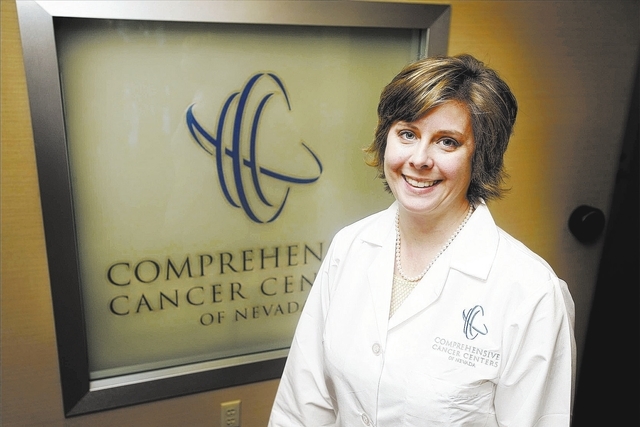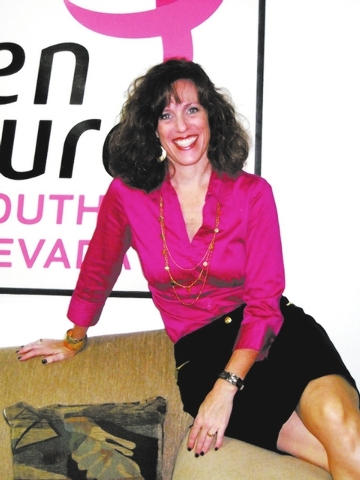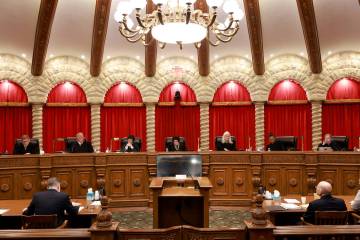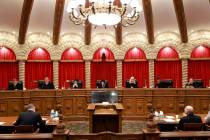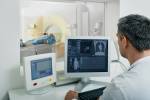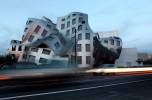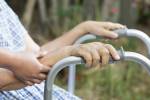Local facilities ease breast cancer battle
In the battle against breast cancer, Southern Nevadan need not look far to seek support or treatment. They need not look far to find a world-class research center that constantly strives to find a cure.
Nestled in parts of the city are offices of the Comprehensive Cancer Centers of Nevada. The facility has a roster of highly skilled doctors, nurses and researchers in its Las Vegas and Henderson clinics that provide adult and pediatric medical and radiation oncology services. State-of-the-art facilities in its clinics across Southern Nevada allow health care professionals to provide “the most effective treatments, both existing and emerging.”
“It is our mission to heal you, to support the emotional well-being of your family, and to be your strongest ally in your fight against cancer,” the center noted on its website.
Comprehensive Cancer Centers of Nevada was formed in 2000 after Southwest Cancer Clinic and Nevada Radiation Oncology Centers joined together “to maximize the delivery of cancer fighting treatments and therapies.” Although the Comprehensive Cancer Centers of Nevada name was formed in 2000, it has a 35-year history of providing cancer care in the valley.
To provide patients with the most progressive and effective cancer treatments, the center expanded its clinical reach by partnering with some of the world’s most prominent oncology-specialized organizations.
It is part of the US Oncology Network, which is one of the nation’s largest networks of community-based oncology physicians dedicated to advancing cancer care in America. In addition, the center is affiliated with the Johnson Comprehensive Cancer Center at UCLA, one of the most respected authorities in cancer research and treatment.
Beating breast cancer is a priority of the Comprehensive Cancer Centers of Nevada. In fact, four of its 13 treatment centers across Southern Nevada are breast surgery centers or clinics that specifically treat the illness.
Breast cancer is one of the most common cancers in the world with 1.3 million individuals diagnosed every year. This type of cancer accounts for 23 percent of all cancers worldwide, studies show.
About one in eight women are likely to have breast cancer, studies say. Men also are afflicted with the disease, but at much lower rates.
A medical oncologist at the cancer center, however, said the good news is there have been a number of new advances available for breast cancer patients recently.
“In the past year, new treatments for metastatic HER2-positive breast cancer were FDA approved and we have seen dramatic improvements in response to therapy for this specific population,” said Dr. Karen Jacks, who specializes in breast and gynecological oncology.
HER2-positive breast cancers, according to the Mayo Clinic, tend to be more aggressive than other types.
“New targeted therapies are available for estrogen sensitive metastatic breast cancers, and research is always ongoing for new medications to address triple negative breast cancers,” Jacks said.
“Additionally, we have seen new radiation techniques in select women after breast conservation surgery (such as) partial mastectomy or lumpectomy,” she said.
Care for breast cancer patients by Comprehensive Cancer Centers of Nevada physicians, meanwhile, extend beyond treatment of the disease.
“Physicians not only focus on disease recurrence, but also issues that can affect survivorship such as anxiety, depression, long-term side effects of therapy, education and health maintenance for prevention of other diseases and social outlets for survivors,” Jacks said.
Long-term care and well-being of breast cancer survivors is paramount, according to the doctors. “We encourage our survivors to be physically active, engage in social activities, volunteer in community organizations, help educate the public about the disease and recognize early symptoms of sequelae of therapy,” she added.
Early detection
Although great strides have been made recently in the effective treatment of breast cancer patients and the long-term care of survivors, health care advocates still insist that “prevention is the best cure.”
“Even though the medical field has made tremendous progress, there is still much to discover about cancer,” Comprehensive Cancer Centers of Nevada’s website notes.
The center advocates individuals follow the guidelines for regular breast cancer screening and self-examinations. This increases the chances of discovering cancer early
“Early detection is the next best thing you can do to protect your health,” its website states.
“Prevention through healthy eating, exercise and lifestyle habits are critical to lowering your cancer risk. Beyond prevention, early detection is the next best thing you can do to protect your health,” it added.
Early detection of breast cancer is the primary mission of the Susan G. Komen for the Cure, which is the most widely known group advocating for breast cancer awareness. It was formed 30 years ago by Nancy Goodman Brinker, who promised her sister Susan Goodman Komen, before the latter died, that she would do everything she could to increase awareness of the disease.
“Susan G. Komen fought breast cancer with her heart, body and soul. Throughout her diagnosis, treatments and endless days in the hospital, she spent her time thinking of ways to make life better for other women battling breast cancer instead of worrying about her own situation,” the Komen website states. In 1982, that promise became “Susan G. Komen for the Cure.”
The foundation’s website, developed in conjunction with the Harvard School of Public Health, offers extensive comprehensive data about screening, early detection, diagnosis and treatment as well as comprehensive information on the disease and its risk factors.
Among the potential risk factors listed are obesity and lack of physical activity as well as lifestyle choices. Older women as well as those who have family members who were afflicted with the disease are at high risk, it stated. “Any personal risk should be shared with a doctor,” the website recommends.
The website also encourages individuals to “maintain a healthy weight, add exercise into your routine, and limit alcohol intake.”
For its part, Comprehensive Cancer Centers of Nevada’s website recommends limiting smoking and tobacco use, eating light, lean foods, fruits, vegetables and whole grain food. Staying active and maintaining a healthy weight is likewise strongly suggested.
Screening tests such as annual mammograms starting at age 40 and for younger women who are at high risk are highly recommended by health care professionals. Clinical breast examinations, meanwhile, are required every year for women under 40.
“The exact cause of the disease is unknown, and at this time, there is no cure. But there is hope,” the Komen website notes.
“Thanks to heightened awareness, early detection through screening, improved treatment methods and increased access to breast health services, people have a greater chance of survival than ever before,” it added.
The Komen website also strongly suggests regular breast self-examination. “Know what is normal for you and see your health care provider right away if you notice any breast changes,” it recommends.
Changes that should not be ignored include lumps or hard knots, swelling, warmth, redness or darkening of the breast. Others that also need attention include changes in the size or shape of the breast, dimpling or puckering of the skin, itchy, scaly sore or rash on the nipple, pulling in of the nipple or other parts of the breast. Nipple discharge that starts suddenly or a new pain in one spot that does not go away should not be ignored either.
Over the years, the Susan G. Komen for the Cure has strived hard to have the greatest effect in the fight against breast cancer as it continues the promise made three decades ago. “Across the country, that promise is upheld by a network of 125 affiliate offices,” the foundation’s website states.
The Southern Nevada affiliate is instrumental in raising awareness for breast cancer support locally, mainly through its annual Race for the Cure.
“The Race for the Cure series is the largest and most successful nonprofit sporting event in the world,” Stephanie Kirby, executive director of the Susan G. Komen Southern Nevada, said, adding, “With millions gathering and participating in this event every year, awareness comes through the sheer dedication of the supporters.”
“Locally, the ability to bring so many people in our city together for one common cause is truly a sight to behold,” Kirby said.
“Thousands of people walking and running through the streets of downtown Las Vegas is not something that is easily overlooked and we encourage everyone to stop, see what we’re organizing and accomplishing and make the decision to take part,” she said.
When it started in 1996, the Las Vegas Race for the Cure had a little over 1,000. Since then the number of runners for the annual May event have ballooned to nearly 15,000. The run raises about $1 million every year. Since it was established, the Southern Nevada affiliate has invested more than $6 million in projects in several counties including Clark, Lincoln, Nye, Esmeralda, White Pine, and Mineral.
About 75 percent of the funds raised during the race, and all other Komen events, stay in Southern Nevada to support programs that serve the uninsured and underinsured in their fight against breast cancer. The remaining 25 percent is directed to the Susan G. Komen Awards &Grants Research Program that works to find a cure to breast cancer.
Cancer concerns in the community
Cancer awareness in the community is the paramount concern of both the Comprehensive Cancer Centers of Nevada and the Susan G. Komen Southern Nevada. In fact, for October breast cancer awareness month, the cancer center was the major sponsor at the local Komen affiliate’s Paint the Square Pink event at Town Square.
The center also supports the activities of nonprofit Par for the Cure, such as its charity golf tournament and Grapes and Hops Festival that supports breast cancer research. The center also participated in the Rose Regatta Dragon Boat Festivals to benefit the breast cancer services at local St. Rose Dominican Hospitals.
“The Comprehensive Cancer Centers of Nevada feels a strong connection and desire to support our local community,” Jacks said.
“Outreach is a priority to us and we strive to educate the Las Vegas community about treatment and prevention as often as possible through our local media outlets, social media, website as well as our attendance at local community events and health fairs,” she added.
One concern about Las Vegas is getting its message across given the city’s diversity, she said. “It is important to Comprehensive Cancer Centers of Nevada that efforts to educate are available to as many diverse people as possible and as community focused as possible,” Jacks said.
This concern is also shared by Susan G. Komen Southern Nevada when it released a statement about the issue last April to mark National Minority Health Month.
In the press release, the Komen affiliate detailed facts about breast cancer among different ethnic groups.
Breast cancer mortality is 41 percent higher in African-American women than in white women. Among Hispanic women, breast cancer is more frequently diagnosed at a later stage, when fewer treatment options are available.
The press release also noted that mammography screening rates among American Indian and Alaskan native women are lower than rates among white women.
Only 48.5 percent of Asian and Pacific Islander women 50 years and older, meanwhile, have had a mammogram or clinical breast exam within the last two years. It is the lowest rate of screening among all ethnic groups.
Although the statement presented national figures, the disparity is exemplified greatly in Las Vegas given the city’s large immigrant populations. Nevada is home to the fastest growing Asian-American and Pacific Islander population, mostly within Clark County, which grew at an explosive 116.5 percent from 2000 to 2010, figures from the U.S. Census Bureau showed. Records also showed the growth of the Hispanic population in the state was at a slower, but no less significant 81.9 percent.
Whether it is distrust, a lack of information or a lack of access or insurance, the result for all minority women is often the same. They aren’t using the health care system as extensively as they could.
In its press release, Komen Southern Nevada stated it is “doing everything possible to reduce and eliminate as many barriers as possible to improve access to health care for the medically underserved. We believe that all women, regardless of race, ethnicity or socioeconomic status, deserve a fighting chance to survive this terrible disease.
“There are definitely challenges associated with sharing a message with multiple cultures,” Kirby said.
To address this, the local affiliate has a position on its board of directors that focuses on multicultural initiatives. “It is the responsibility of this board member, along with the office staff, to determine the most culturally sensitive way to approach different groups,” Kirby said.
“We all need to be sensitive to the beliefs or fears of diverse communities. We cannot approach all cultural groups in the same way and it’s important to recognize and embrace differences,” she added.
For its part, Comprehensive Cancer Centers of Nevada is translating brochures and other materials in several languages to reach more members of Las Vegas’ multicultural population. Its 13 treatment centers and offices and two outreach clinics in Boulder City and Pahrump are open to those in need of services.
“We also have social workers available to help connect patients and their families with the resources they need before, during and after treatment,” Jacks said.



